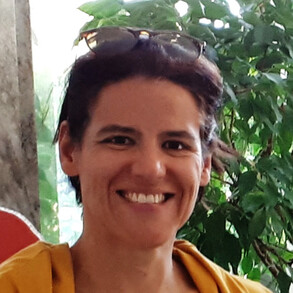
JOINT WEBINAR
Takeda, PathoQuest & Charles River Laboratories
Adventitious Agent Testing For MMV:
How Much Do We Really Know?
01st October 2024
10:00am EDT / 7:00am PDT / 3:00pm BST / 4:00pm CEST
Presented by:
Maria Farcet, Head of Cell Culture, Virus Models & Serology in the Global Pathogen Safety /
Global Quality Team at Takeda
featuring
Amina Cherif Louazani, Ph.D., Viral Safety Manager at PathoQuest
and
Dr. Denise Teber, Scientific Expert of the PCR department at Charles River Laboratories
Minute virus of mice (MMV) has contaminated biotechnological processes in the past, making specific MMV testing recommended if the production cell line is known to be permissive for this virus. Testing is widely done using cell-culture based adventitious virus assays, yet MMV strains may differ in their in vitro cell tropism. Here, I present growth characteristics of different MMV strains on A9 and 324K cells and identified significant differences in susceptibility of these widely used indicator cell lines to infection by different strains of MMV, which has implications for MMV detectability during routine testing of biotechnology process harvests[1].
An MMV specific PCR was evaluated as a more encompassing method and was shown as a suitable replacement for cell culture-based detection of the different MMV strains. This method not only provides more rapid detection but also covers other rodent parvoviruses that might contaminate biotechnological processes. Although no MMV contamination event of human-derived cell lines has been reported in the past, biotechnological processes that use these lines, such as HEK293, commonly used in biopharmaceutical manufacturing, also need to consider MMV-specific testing as we showed them to be susceptible to productive MMV infection.
[1] Farcet et al., Biotechnology & Bioengineering 2024; 121:131-138; DOI: 10.1002/bit.28573

Maria Farcet
Head of Cell Culture, Virus Models & Serology in the Global Pathogen Safety / Global Quality team at Takeda
Maria Farcet is Head of Cell Culture, Virus Models & Serology in the Global Pathogen Safety / Global Quality team of Takeda in Vienna, Austria. In her 15+ year career in this field she gained profound expertise in virology and virus safety margins of biological medicinal products. She currently oversees the establishment and operation of virus test systems to enable virus reduction studies, virus testing and virus neutralization assays, under GMP/GLP.

Amina Cherif Louazani, PhD
Viral Safety Manager at PathoQuest
Amina Cherif Louazani (PharmD, PhD), Viral Safety Manager at PathoQuest, has a strong background in virology and bioinformatics. She holds a PhD in Infectious Diseases from Aix-Marseille University, France, and specializes in NGS data analysis and protocol development for viral transcriptomes. Amina has published several peer-reviewed articles and held various research and clinical roles. At PathoQuest, she leverages her expertise to provide expert reviews of viral safety assessments based on the iDTECT® platform of NGS assays.

Dr. Denise Teber
Scientific Expert of the PCR department at Charles River Laboratories